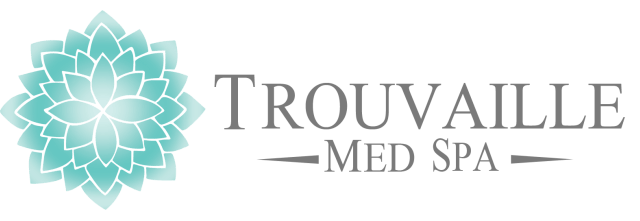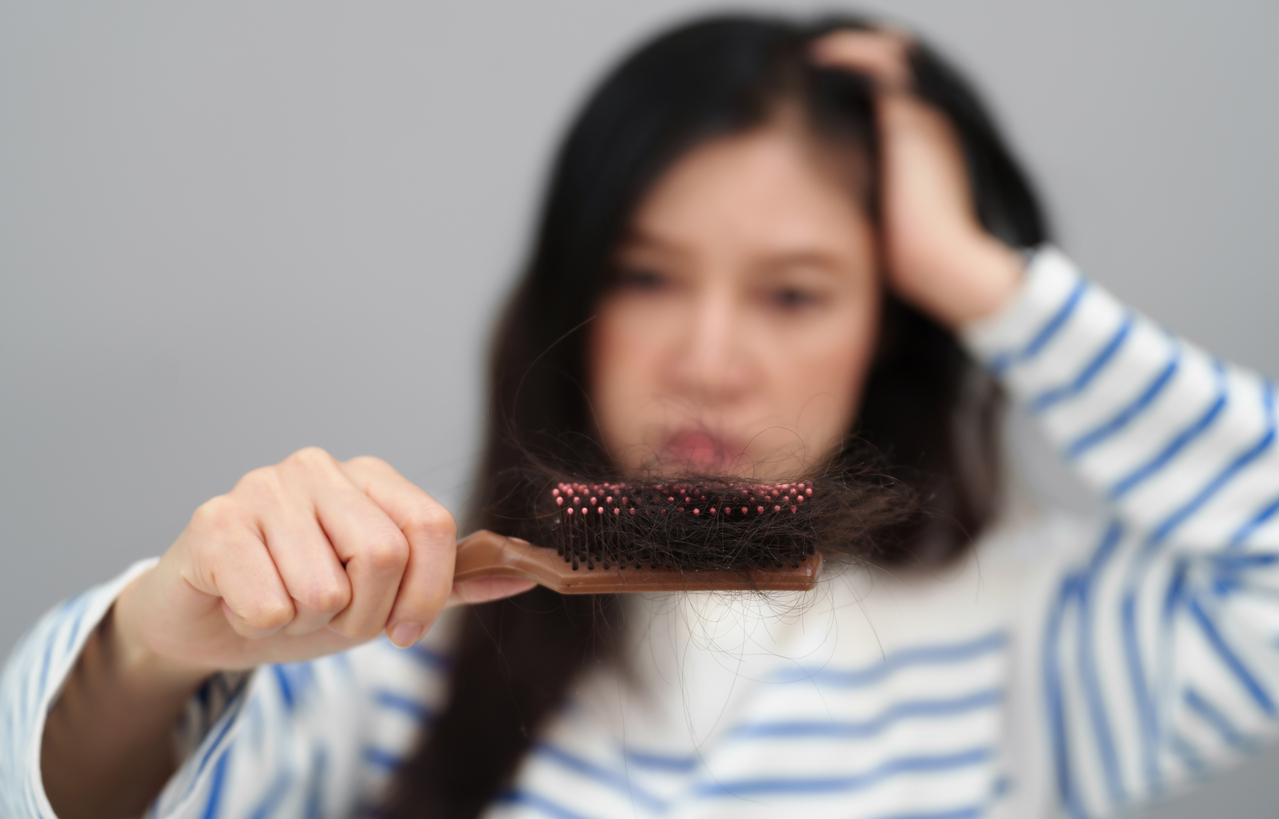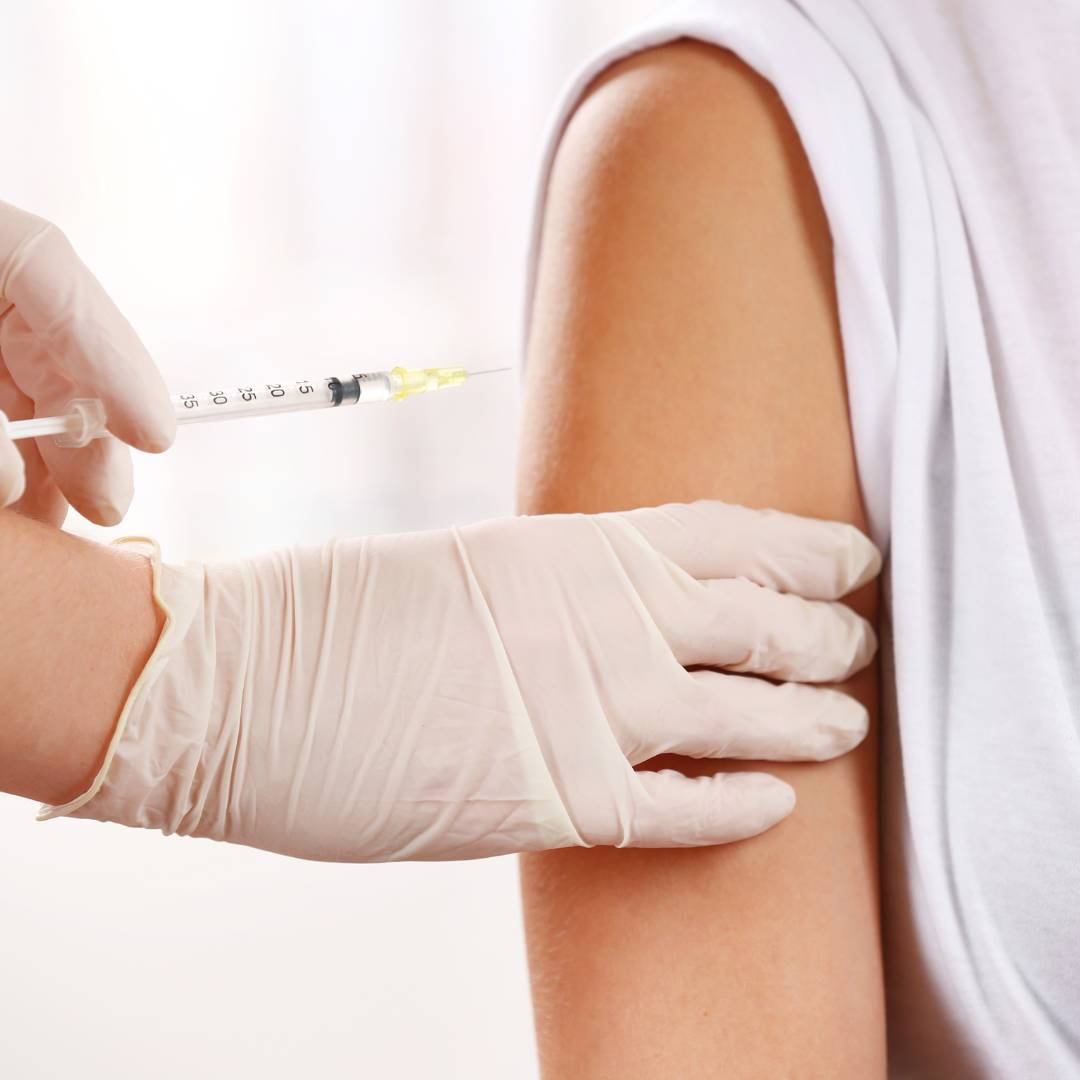One of the often-underestimated challenges for new mothers during the postpartum period is dealing with postpartum hair thinning.
It’s more than just hair.
After giving birth, many mothers experience increased hair shedding or visible thinning due to hormonal fluctuations. This can be distressing, with hair strands being found on pillows, in shower drains and on hairbrushes. Whether it’s a first-time experience or not, this condition significantly affects a lot of mothers. While specific numbers are hard to determine, the American Pregnancy Association suggests that 40-50% of new mothers will experience hair loss after childbirth.
At Trouvaille Med Spa, we’ve found that Platelet-Rich Plasma (PRP) therapy shows great promise in harnessing your body’s natural healing abilities to promote hair growth and enhance thickness. PRP can effectively combat postpartum hair thinning, allowing you to regain confidence and cherish precious moments with your new baby.
In this post, you’ll learn tips on how to reduce postpartum hair loss.
Why Postpartum Hair Loss Happens
During pregnancy, increased levels of estrogen trigger a prolonged growth period for hair, resulting in thicker and more luxurious strands. However, after giving birth, these estrogen levels decrease, causing more hair follicles to enter the shedding phase at the same time, leading to noticeable hair thinning or even significant hair loss.
Postpartum hair thinning typically starts around two months after delivery and can persist for several months, gradually reducing from the time your baby reaches six months to a year old.
Platelet-Rich Plasma (PRP) therapy is considered one of the most effective treatments for addressing hair thinning, especially when it persists.
PRP Therapy Overview
Platelet-rich plasma (PRP) therapy is a non-surgical, minimally invasive technique for stimulating natural hair growth and minimizing hair loss.
PRP is a potent substance derived from a component of blood samples rich in growth factors. When administered into the scalp, it encourages the growth of new hair.
For optimal results, a package of 4-6 treatments is usually recommended. While the results may vary for each person, you can expect noticeable improvements within six months following the initial treatment.
When evaluating popular treatments for hair loss, PRP therapy emerges as a standout option. While medications such as Minoxidil may yield results, they require ongoing use and carry the potential for side effects. On the other hand, hair transplant surgeries present a more permanent solution but are invasive, costly and involve extended recovery periods and associated risks.
PRP therapy is effective and avoids the risks of scarring, infections and systemic side effects linked to medications and hair transplant procedures.
PRP Therapy Steps
PRP for hair restoration has three steps:
- Blood Separation Process: To begin, a small blood sample is drawn and placed in a centrifuge to separate the platelet-rich plasma (PRP) from red blood cells.
- Scalp Application: The platelet-rich plasma (PRP) is administered directly into the scalp at the hair follicle level to address thinning or hair loss in specific areas.
- Follicle Stimulation: The growth factors in PRP stimulate hair follicles, encouraging the growth of thicker and healthier hair.
PRP Benefits
Its benefits are tied to its characteristics:
- Safe: Since PRP comes from your blood, the risk of allergic reactions and other adverse effects is minimal.
- Effective: Regular PRP treatments can result in thicker, denser hair, enhancing overall hair volume and appearance.
- Minimally Invasive: PRP uses your body’s platelets to stimulate hair follicles and promote natural hair growth. It has minimal downtime.
PRP Side Effects
The potential side effects of PRP treatment are typically mild, temporary and generally last only a few days.
Possible side effects of the treatment include redness and swelling in the treated area, itching, headache, numbness at the site and discomfort during the treatment.
No significant side effects, such as scarring, hematoma or allergic reactions, have been documented following treatment.
Hair Care Tips
Aside from this treatment, follow these healthy hair care practices to maintain hair health and minimize the possibility of hair loss. These include:
- Use a soft-bristled brush and gently brush your hair to distribute natural oils and avoid breakage.
- Reduce the use of hot styling tools such as flat irons and blow dryers.
- Avoid or reduce the wearing of tight hairstyles such as braids or ponytails to minimize tension on the hair follicles.
- Get regular haircuts helps to get rid of split ends and stop them from causing more damage.
- Maintain a nutritious diet that includes iron, Vitamin C, Vitamin D, Omega-3 fatty acids, magnesium and beta-carotene. These essential nutrients support hair growth and strength, improving overall hair health and vitality.
Restore Your Hair with PRP at Trouvaille Med Spa
Hair thinning after childbirth is a common concern for new moms, especially if it’s their first baby. In some cases, it may even uncover underlying previously unnoticed alopecia.
New mothers are already dealing with sleep deprivation and stress from taking care of their baby and adjusting to their postpartum body.
Consult with a qualified professional to determine if PRP therapy is suitable for you. If you’re looking for PRP for hair loss near you in Illinois, look no further.
Get in touch with us for a personalized consultation today to address your concerns about hair loss.




